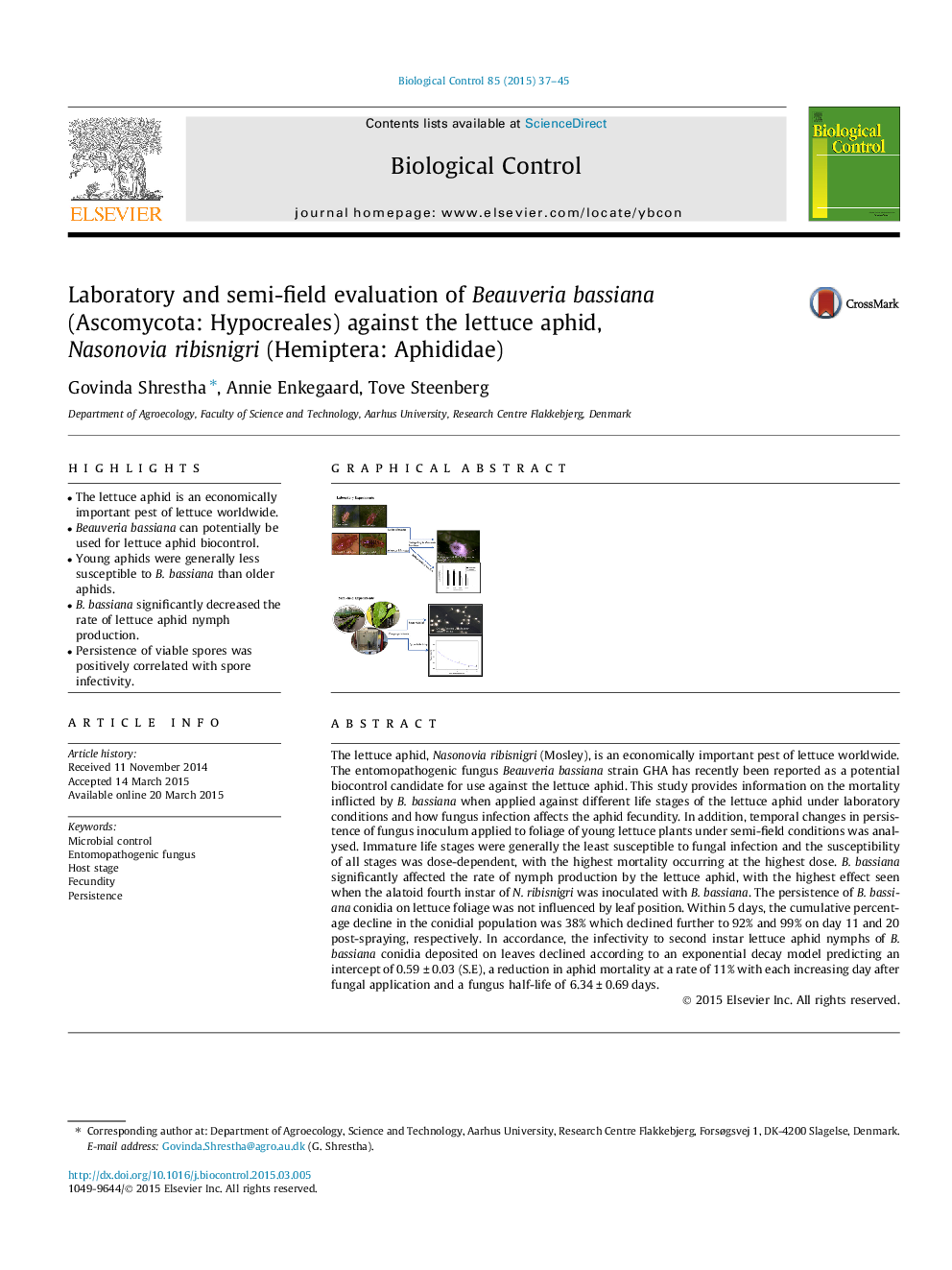| کد مقاله | کد نشریه | سال انتشار | مقاله انگلیسی | نسخه تمام متن |
|---|---|---|---|---|
| 4503804 | 1624249 | 2015 | 9 صفحه PDF | دانلود رایگان |

• The lettuce aphid is an economically important pest of lettuce worldwide.
• Beauveria bassiana can potentially be used for lettuce aphid biocontrol.
• Young aphids were generally less susceptible to B. bassiana than older aphids.
• B. bassiana significantly decreased the rate of lettuce aphid nymph production.
• Persistence of viable spores was positively correlated with spore infectivity.
The lettuce aphid, Nasonovia ribisnigri (Mosley), is an economically important pest of lettuce worldwide. The entomopathogenic fungus Beauveria bassiana strain GHA has recently been reported as a potential biocontrol candidate for use against the lettuce aphid. This study provides information on the mortality inflicted by B. bassiana when applied against different life stages of the lettuce aphid under laboratory conditions and how fungus infection affects the aphid fecundity. In addition, temporal changes in persistence of fungus inoculum applied to foliage of young lettuce plants under semi-field conditions was analysed. Immature life stages were generally the least susceptible to fungal infection and the susceptibility of all stages was dose-dependent, with the highest mortality occurring at the highest dose. B. bassiana significantly affected the rate of nymph production by the lettuce aphid, with the highest effect seen when the alatoid fourth instar of N. ribisnigri was inoculated with B. bassiana. The persistence of B. bassiana conidia on lettuce foliage was not influenced by leaf position. Within 5 days, the cumulative percentage decline in the conidial population was 38% which declined further to 92% and 99% on day 11 and 20 post-spraying, respectively. In accordance, the infectivity to second instar lettuce aphid nymphs of B. bassiana conidia deposited on leaves declined according to an exponential decay model predicting an intercept of 0.59 ± 0.03 (S.E), a reduction in aphid mortality at a rate of 11% with each increasing day after fungal application and a fungus half-life of 6.34 ± 0.69 days.
Figure optionsDownload as PowerPoint slide
Journal: Biological Control - Volume 85, June 2015, Pages 37–45